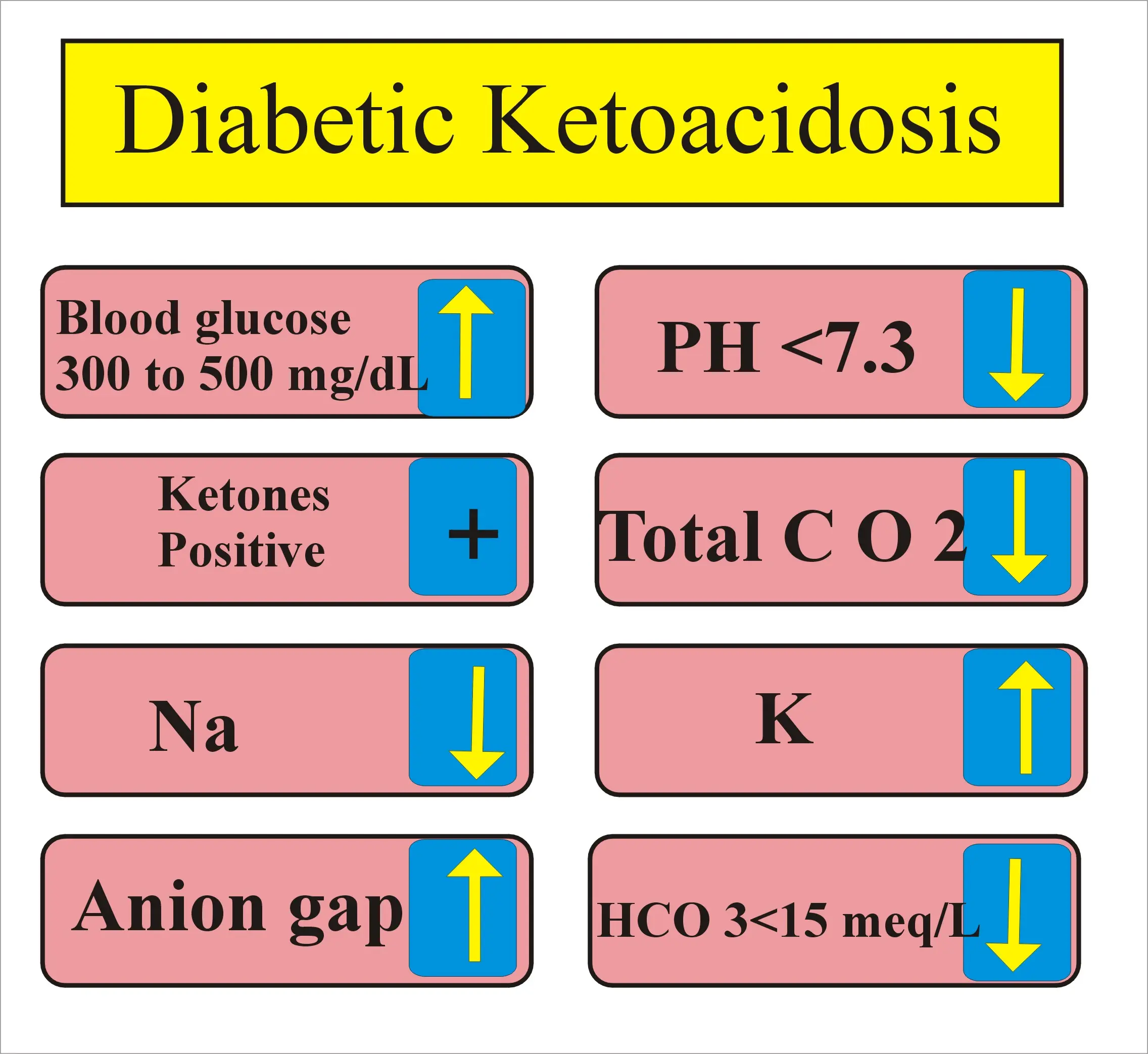Can Diabetic Ketoacidosis be Cured?
Sometimes
Can be reversed with prompt and appropriate treatment; management focuses on correcting the metabolic imbalance and preventing complications

What is Diabetic Ketoacidosis?
Diabetic ketoacidosis (DKA) is a serious complication of diabetes, primarily affecting individuals with type 1 diabetes. It results from a lack of insulin, leading to high blood ketone levels. Emergency medical treatment is required.

Clinical Aspects

Characteristics
Serious complication of diabetes characterized by high blood sugar levels, dehydration, and the presence of ketones in the blood and urine

Symptoms
Thirst, frequent urination, nausea, abdominal pain, confusion

Diagnosis
Blood tests, assessment of symptoms

Prognosis
Variable, can be life-threatening

Complications
Electrolyte imbalances, complications affecting multiple organs
Etiology and Treatment

Causes
Insufficient insulin leading to the breakdown of fats for energy, resulting in the production of ketones

Treatments
Insulin therapy, fluid replacement, electrolyte correction, addressing underlying causes

Prevention
Insulin therapy, fluid replacement, electrolyte correction, addressing underlying causes
Public Health and Patient Perspectives

Epidemiology
Serious complication of diabetes, characterized by high blood ketone levels

Patient Perspectives
Hospitalization, intravenous fluids, insulin therapy
Remember, the information provided here is intended for general knowledge purposes and may not apply to every individual case. To ensure you have accurate information relevant to your specific situation, always consult with a healthcare professional.
Share: